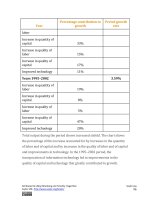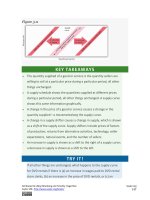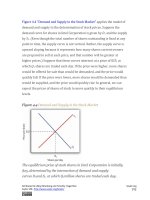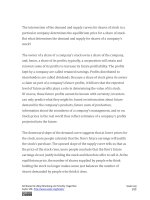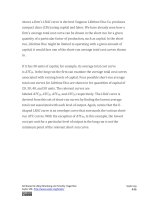Authors libby rittenberg 774
Bạn đang xem bản rút gọn của tài liệu. Xem và tải ngay bản đầy đủ của tài liệu tại đây (583.56 KB, 1 trang )
curve; at wages higher than the negotiated wage, the existing supply
curve is operative. Up to the quantity of labor at the intersection of
the negotiated wage and the supply curve, the wage and MFCare the
same. At any wage between Wm and Wu, the firm will maximize profit
by employing labor where MRP and MFC are equal, and this will occur
at a quantity of labor that is greater than Lm.
[1] John Dinardo and David S. Lee, “Economic Impacts of New Unionization on
Private Sector Employers: 1984–2001,” The Quarterly Journal of Economics,
119(4) (November 2004): 1383–1441.
[2] David G. Blanchflower and Alex Bryson, “What Effect Do Unions Have on
Wages Now and Would Freeman and Medoff be Surprised?” Journal of Labor
Research 25:3 (Summer 2004): 383–414.
14.4 Review and Practice
Summary
Factor markets diverge from perfect competition whenever buyers and/or
sellers are price setters rather than price takers. A firm that is the sole
purchaser of a factor is a monopsony. The distinguishing feature of the
application of the marginal decision rule to monopsony is that the MFC of
the factor exceeds its price. Less of the factor is used than would be the
case if the factor were demanded by many firms. The price paid by the
monopsony firm is determined from the factor supply curve; it is less than
the competitive price would be. The lower quantity and lower price that
occur in a monopsony factor market arise from features of the market that
are directly analogous to the higher product price and lower product
quantity chosen in monopoly markets. A price floor (e.g., a minimum wage)
can induce a monopsony to increase its use of a factor.
Attributed to Libby Rittenberg and Timothy Tregarthen
Saylor URL: />
Saylor.org
774
